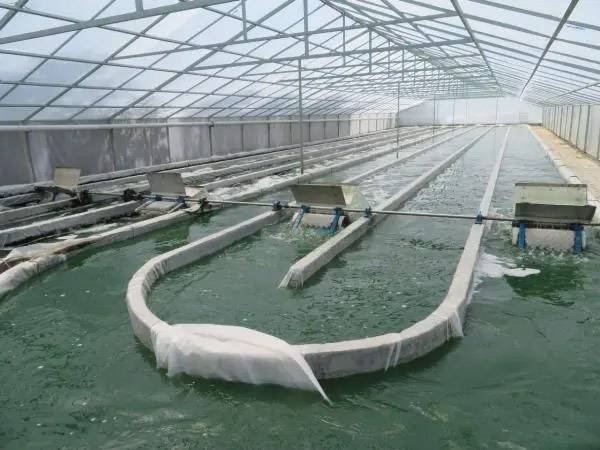Economic Viability of Large-Scale Spirulina Production: A Deep Dive
The economic viability of large-scale spirulina production depends on several key factors. These include optimal cultivation systems, productivity-enhancing techniques, and overcoming production bottlenecks. Here we will delve into the economic analysis of spirulina farms, exploring cultivation methods used in different regions, including India, and examining the current state of the spirulina market. It also looks at ongoing spirulina research to improve yield and quality, providing insights into the future of this growing agricultural sector.

Optimal Cultivation Systems
Large-scale spirulina production employs various cultivation systems, each with its advantages and challenges. Open raceway ponds represent a low-technology approach, suitable for less demanding markets.
These systems are cost-effective, scalable and most often used. But lack control of temperature and may be susceptible to contamination. Closed photobioreactors (PBRs) offer more controlled conditions and, reduced contamination risks. However, PBRs come with higher capital costs and operational complexities. A promising alternative is the hybrid system, which combines the benefits of both open and closed systems. The choice of cultivation system depends on factors such as Climate, available resources, and target market demands.
Key Factors Affecting Productivity
Light is one of the most critical factors for spirulina productivity. As a photosynthetic organism, spirulina requires adequate light to carry out photosynthesis and grow efficiently. Spirulina thrives in warm temperatures, making temperature control another crucial factor in maximizing productivity. The optimal temperature range for spirulina cultivation is between 35°C and 37°C (95°F and 98.6°F). Spirulina prefers alkaline conditions, with an optimal pH range of 9.0 to 11.0. Maintaining this pH level is vital for healthy spirulina growth. Regular monitoring of pH levels and adjustments can help maintain the ideal environment for spirulina cultivation. The quality of water used in spirulina farming has a direct impact on productivity. Contaminants, heavy metals, and pollutants can inhibit growth or even cause crop failure. Clean, filtered water with a stable pH and salinity level is essential for cultivating healthy spirulina. The timing and method of harvesting also influence spirulina productivity. Harvesting too early can result in lower yields, while harvesting too late can lead to lost productivity.
Economic Analysis
The spirulina market is experiencing significant growth, with projections indicating it will reach 11.10 billion by 2030, at a CAGR of 9.4% from 2023 to 2030. In terms of volume, the market is expected to reach 102,381.3 tons by 2030, at a CAGR of 8%. This growth is driven by increasing demand for natural ingredients, substantial investments in research and development, and government support for spirulina production. The nutraceuticals category stands out as the primary revenue driver, closely tied to the growing interest in natural alternatives to traditional pharmaceuticals. The powder formulation leads in controlling the market’s revenue, fueled by manufacturers of nutraceuticals and culinary products witnessing a surge in global demand for spirulina powder.
Overcoming Production Bottlenecks
To enhance large-scale spirulina production, implementing advanced cultivation systems is crucial. At Greenbubble, a compact, user-friendly system has been developed to stimulate and monitor spirulina growth efficiently.
The large-scale production of spirulina has a significant impact on the global food industry, offering a sustainable and nutrient-rich solution to address food security challenges. The economic viability of spirulina farms hinges on various factors, including cultivation systems, productivity-enhancing techniques, and market demand. The spirulina market is poised for substantial growth, driven by increasing interest in natural ingredients and support from governments and researchers.
To ensure the continued success of large-scale spirulina production, ongoing research and technological advancements are crucial. These efforts aim to improve yield, maintain consistent quality, and overcome production bottlenecks. As the industry evolves, the focus on optimizing cultivation methods and implementing innovative monitoring systems will play a key role in shaping the future of spirulina agriculture, making it a promising sector in the quest for sustainable nutrition.
 Government Grants and Subsidies for Spirulina Mass Production: How to Access Support
Government Grants and Subsidies for Spirulina Mass Production: How to Access Support Profitability in Spirulina Farming Calculating ROI in Large-Scale Production
Profitability in Spirulina Farming Calculating ROI in Large-Scale Production Automation in Spirulina Farming: How Technology Can Boost Mass Production
Automation in Spirulina Farming: How Technology Can Boost Mass Production Spirulina Quality Control in Mass Production: Ensuring Consistency and Safety
Spirulina Quality Control in Mass Production: Ensuring Consistency and Safety Market Trends and Opportunities for Commercial Spirulina Farming
Market Trends and Opportunities for Commercial Spirulina Farming
Categories
